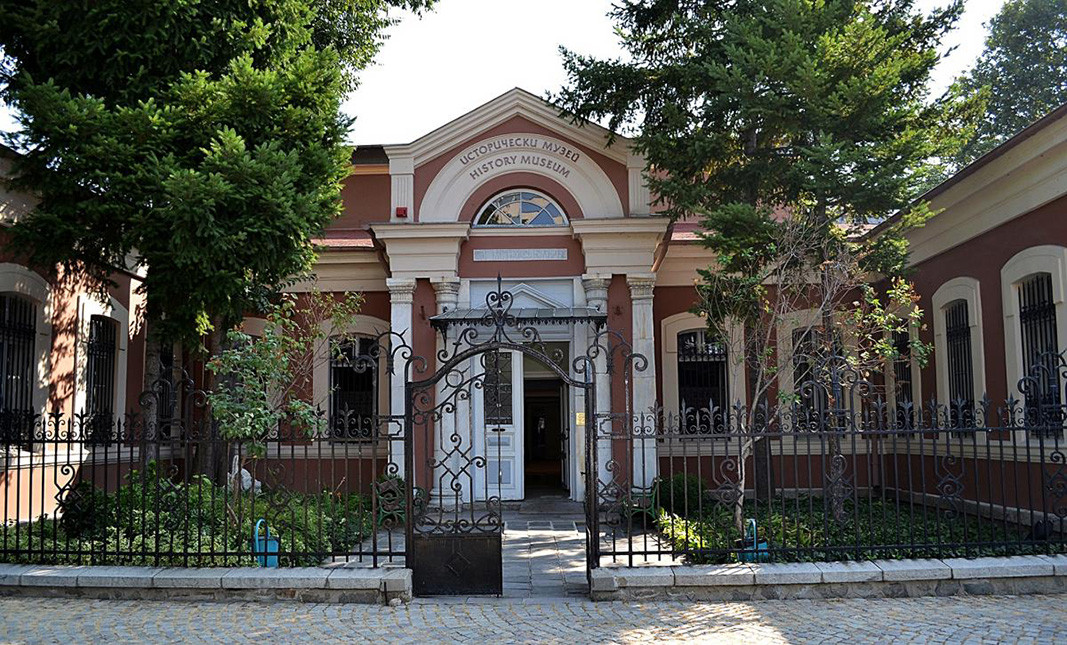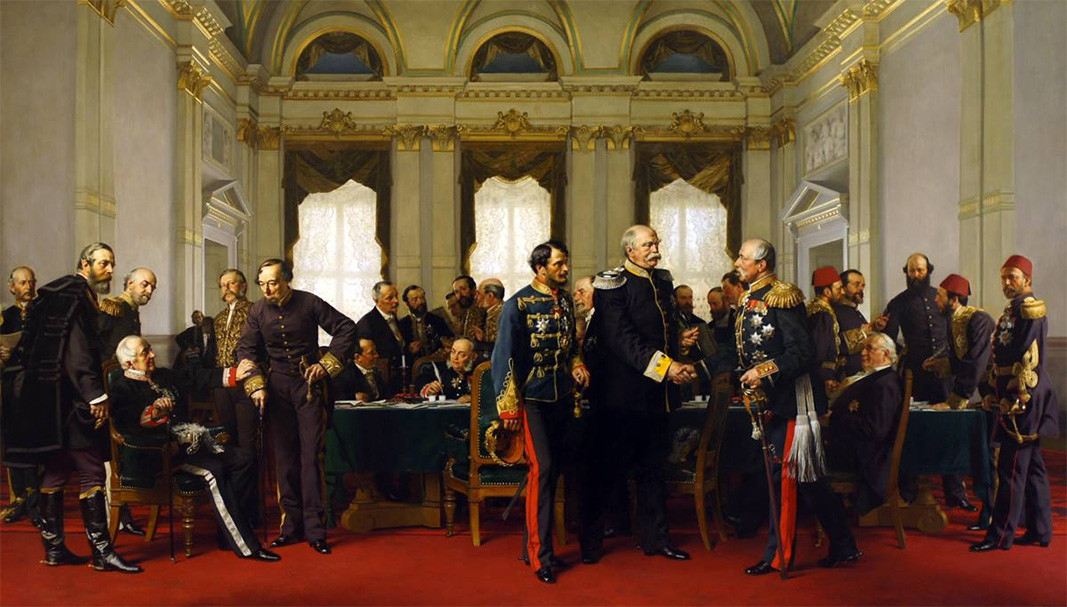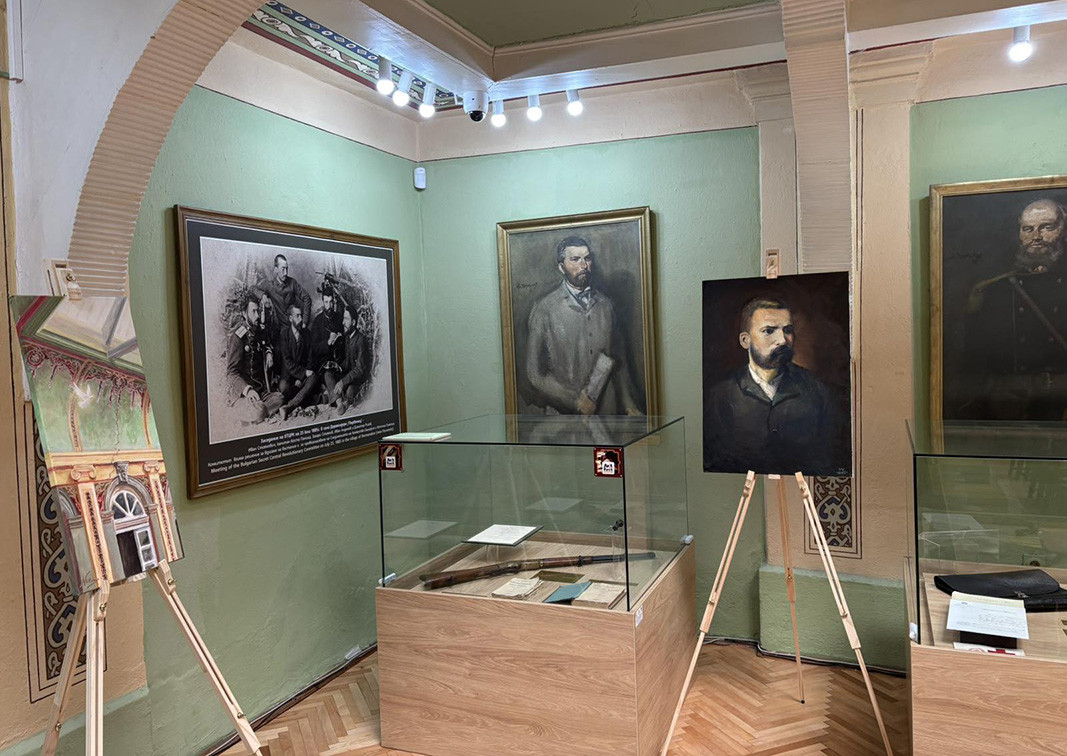It was 1883 when construction began in Plovdiv on the building of the Regional Assembly of Eastern Rumelia, based on a design by architect Pietro Montani. Eastern Rumelia was an autonomous Bulgarian province within the Ottoman Empire and one of the parts of Bulgaria fragmented after the Congress of Berlin in 1878. The building featured a spacious parliamentary hall for deputies’ meetings and side wings for administrative work.
On 6 September 1885, however, the unification of Eastern Rumelia and the Principality of Bulgaria was proclaimed. Since Sofia became the capital of the united Bulgarian state, the building was never used for its original purpose. The following March, it became home to the Plovdiv National Library and Museum, establishing itself as one of the city’s most important cultural institutions. Its authentic appearance has been preserved to this day, and it continues to serve as one of Plovdiv’s cultural centres.

In 1985, on the centenary of the historic event, the exhibition Unification of Bulgaria in 1885 opened in the building. It covers the period from the signing of the Treaty of Berlin in 1878, which divided Bulgarian lands, to the Serbo-Bulgarian War of 1885.

“The exhibition opens with a copy of a painting by German historical-genre artist Anton von Werner, depicting the participants in the Congress of Berlin, whose decisions divided Bulgarian territories into five parts and created two states – the Principality of Bulgaria and Eastern Rumelia,” said Stoyan Ivanov, director of the Plovdiv History Museum. “The exhibition recreates the brief life of Eastern Rumelia, which lasted just seven years, along with the province’s political and social activity. The section on the 1885 Unification of Bulgaria showcases the resistance movement of southern Bulgarians, the formation of the Gymnastic Rifle Associations, which helped resist the implementation of the Congress’s clauses, and the work of provincial governors Aleko Bogoridi and Gavril Krastevich. It also highlights the establishment of the first political parties in the region.”

“In the ‘Unification’ hall, visitors can see original exhibits – personal belongings and documents of some of the most active figures of the period, medals, cold steel and firearms, as well as photographs and papers of participants in the Unification and the Serbo-Bulgarian War. In this way, we present the life of Eastern Rumelia and the people who lived and worked in the province until the Unification of 1885,” Ivanov told Radio Bulgaria.
For the 140th anniversary of the Unification of the Principality of Bulgaria and Eastern Rumelia, the Plovdiv Regional History Museum is preparing a new exhibition with further valuable artefacts.

“The decision for this exhibition was taken last year, when, together with colleagues from the Institute for Historical Studies at the Bulgarian Academy of Sciences, we organised a national conference, The Unification of 1885 and its Figures. Too often we overlook those lesser-known people who, alongside the prominent leaders, contributed through their actions to making this great event possible. For our exhibitions we always show items from the museum’s collections connected with the Unification. This time we will present rarely displayed cultural treasures – for example, issue No. 4 of the newspaper Borba, which has been restored and will be on show for visitors, together with other documents related to the act of 6 September,” Ivanov explained.

Visitors to the museum and the city will also have the chance to see impressive works by students of the National School of Arts Tsanko Lavrenov, who created paintings and posters dedicated to the 140th anniversary of the Unification.

Bulgarians are among the few peoples in the world with a holiday dedicated to spirituality—the National Awakeners' Day. We celebrate it every year on November 1 to honor those who awakened the nation to freedom, knowledge and dignity during the dark..
St. Demetrius Day – October 26, is celebrated throughout Bulgaria, and his relics, kept in Thessaloniki, are a constant object of veneration by Bulgarians who often travel to Northern Greece. In the folk calendar, St...
The Anthem of Independence was performed for the first time on September 22, 1908, in the Black Sea city of Burgas. The author of the melody and lyrics—military bandmaster Georgi Shagunov—noted on the title page of the score that the anthem was..

+359 2 9336 661
